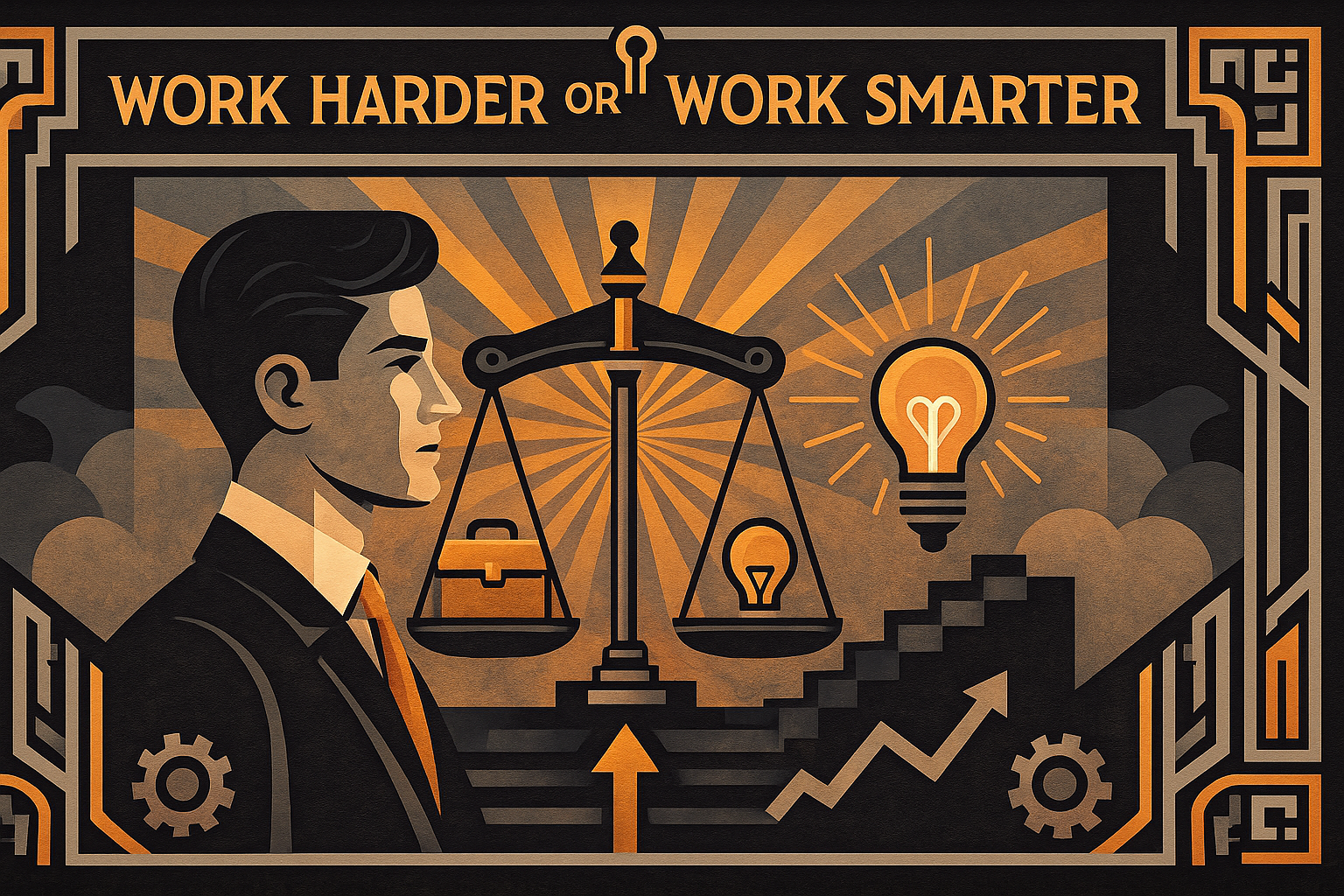How to Talk About Your Career Transition with Confidence

Why Does Talking About Career Transitions Feel Hard and kinda Scary?
We know that change is always a little uncomfortable and scary — saying “I’m changing careers” out loud can feel a bit like telling your family you’ve decided to become a goat herder in the Himalayas. Sometimes you get applause for the announcement, sometimes crickets. Sometimes you get the concerned questions and something more.
But the reality is career transitions aren’t rare anymore—they’re the new normal. In fact, 59% of U.S. professionals were actively looking for a new job in 2024. Careers are no longer a 30 - 40 year marathon doing one thing at one company. People change directions, pivot, explore new options, step away, step back in and so much more over their working lives today.
Whether you’re moving from finance to UX, advertising to education, or burnout to something less soul-crushing, pivots are moments of inflection for us all to consider, "How do I bring value to the world and through my professional life?"
But that doesn't make the road easy. You can expect a healthy dose of imposter syndrome, fear of rejection, inner doubt gremlins — they all have VIP passes on the career-transition roller coaster. But navigating your own career path is what build resilience, creativity and the discipline (and joy!) to keep discovering.
This guide isn’t just about explaining your career change — it’s about owning your evolution with clarity, confidence, and maybe even a little swagger.
1. Knowing the "Why" Behind Your Career Transition
Before you jump into the mechanics of the resume and LinkedIn content strategy, take a step back and think about the real reasons that you wanted redirect in the first place. Understanding for yourself and then crafting a narrative for your pivot helps others to understand why it makes sense and what you can bring to the table in a new role.
Clarify Your ‘Why’
“I was burned out.”
“I want more money.”
“I just can’t do another year of this.”
Totally get it and all good reasons to make a change. But that doesn't really anchor on where you are headed; it's stuck in the past. You need to focus on that future version of yourself and what you are going to bring to the table. Nail all of these points:
- Is there a values mismatch? (Maybe you want to work somewhere that actually gives a crap about climate change or a social cause that interests you.)
- Is it a skills mismatch? (You shine at team-building, but your current job treats people like widgets.)
- Is your industry heading toward oblivion thanks to automation or outdated practices?
Grab a journal and start a little freestyle writing exercise with yourself. Or go for a run. Or chat with a mentor. You could even use a career tool like Career Compass AI to reflect on what’s driving the change. The better you know your why, the less you’ll waver when someone challenges your move and the more you can position your past experience as a catalyst and value-driver in your new direction.
2. Reframe Your Story: From “I’m Starting Over” to “I’m Evolving”
A good way of reframing is to think of your career not as a ladder, but as a jungle gym. Sometimes you're going up, sometimes over, sometimes you're hanging from the ceiling just hoping you don't let go! Each job is a tour of duty or a chapter. And newsflash: you’re not discarding the book — you’re just writing a new chapter.
Translate Skills, Not Job Titles
Your job title might not “match” the new field, but your skills sure might. Start to think in terms of what you are bringing and how that makes you uniquely positioned to succeed in the new role or direction. The trick is learning how to connect the dots.
Connect the Dots for Others
It is possible that people won’t automatically see how your past experience applies to your new field. That’s your job — to explain the connection without sounding apologetic. Think of yourself as both the author and the translator of your career story. Reframe your narrative so that each twist in your path sounds intentional (even if it didn’t feel that way at the time). You need to have a short (30-seconds) and longer (2 min) version of this story and you need to know it inside and out.
Communication is an art and when you master it through practice, it can open doors for you.
3. Write It Down! Craft a Confident Career Transition Statement
This is not just an exercise, this is going to be your roadmap and north star on your new journey. Not only does it clarify and crystalize for you, it will cut through the noise for your audience.
Get it down on paper...
A tight, two-sentence explanation that covers:
- Where you’ve been
- What insight you gained
- Where you’re headed
- Why it actually makes sense
Let’s See It in Action
- “After five years in HR, I realized I was most energized by analyzing people programs, not just running them. That led me to dive into people analytics, where I can drive strategy with data.”
- “I spent six years teaching high school English, but what lit me up was designing lesson plans and classroom activities. Now I’m building a career in content strategy.”
Adjust the words until they feel natural — like something you’d say over coffee, not in a stiff interview with a hiring bot. Say it out loud and own it. Use this statement in networking chats, LinkedIn intros, or even your next awkward family reunion. It’s your succinct story of why you’re evolving. It is also a reminder and a lighthouse for you while you are navigating this transition. Come back to it daily, remind yourself of where you are going and why it matters.
4. Anticipate — and Answer — the Tough Questions
It is probably no surprise that people may have some touch questions. Especially people like hiring managers, haha. Some curious, some skeptical, some drenched in well-meaning confusion. The typical suspects:
- “So… why are you making this change?”
- “Do you have any experience in this field?”
- “How do we know you’ll stick with it?”
Don’t Panic. Prepare.
Good answers balance logic and passion. For example:
“After ten years in retail management, I realized my favorite part was figuring out how customers navigate our store. That curiosity led me to study user experience design, take on a few freelance projects, and now I’m pivoting into UX because it taps into both my empathy and analytical side.”
See what happened there?
- It explains the journey.
- Shows you took initiative.
- Connects the dots from old to new.
- Doesn’t beg for forgiveness.
Practice delivering responses like that. With preparation, you’ll answer tough questions with confidence instead of a deer-in-headlights stare.
5. Use Storytelling to Build Credibility and Connection
Resumés are kinda list-y. Lots of bullet points and this is what I did and where I was and what I accomplished. But they can leave a lot out between the line items. Stories, on the other hand? They’re glue. A good story makes you memorable and shows who you really are. A good story draws people in and let's them connect to you.
Try a simple story arc when talking about your career change: Situation → Decision → Action → Outcome.
Example
“When I was pulling late nights to build client pitch decks, I realized the thrill wasn’t in the pitch itself — it was in crafting the story. That led me to volunteer on a nonprofit’s content team, and I was hooked. Now I’m channeling that passion into a move to digital marketing, and I’ve already started building my portfolio.”
Notice, that story does a lot of heavy lifting. It doesn’t just show you have some experience — it shows you took initiative before anyone even paid you to do the new thing. Gold star for you.
Also, don’t underestimate the impact of preview projects (little sneak peeks of your new career in action):
- Rebranded your cousin’s candle business for fun? Talk about it!
- Volunteered to run social media for a local nonprofit? Add it to your portfolio.
- Built a sample UX wireframe just because you wanted to learn? You’re ahead of the curve.
These aren’t fluff — they’re evidence. They scream, “I’m not just interested in this field — I’m already doing it.” When you share these mini-stories, you build credibility and help others see you in your new light.
6. Get Feedback and Practice Your Delivery
You might think that you can walk into a room and wing it, but trust me, you can't. Every great performance came with years of hard work behind it. So get comfortable SPEAKING your story out loud. Share it with other people that you trust, either professionals or trusted friends.
Why Practice Helps
Two magical things happen when you practice out loud:
- Emotional stability: You stop freezing up when someone raises an eyebrow or interrupts your story. Because you KNOW it, you don't get thrown off your flow. You go from one moment to the next effortlessly. And if you do get knocked off, you can find a way to get back on the train again.
- Clarity boost: That sentence you thought made sense might actually be a tongue twister when spoken. Or when you hear it out loud, you might think "Bullshit!" This is your chance to dig in and improve your working draft.
Ways to Practice
- Role-play with a friend who will give it to you straight (not just “You sound great!!” when you don’t).
- Record yourself and (cringe) watch the replay. You’ll survive, promise. It will be hard.
- Even use an AI tool to get objective feedback on your tone and structure (for example, Career Compass AI can analyze your elevator pitch and highlight filler words or jargon).
One more thing: take the notes, but hold onto your vision and what is important to you. Feedback is helpful, but your story has to feel like yours, not a committee-approved script. Practice until you can talk about your transition in a relaxed, confident way — like it’s no big deal (because it isn’t, really). What is a big deal, is you. :)
7. Confidence Is a Skill — Not Just a Vibe
Let’s bust a myth: people aren’t born confident. Even when someone seems confident, maybe they aren't. You know that old saying, "Fake it till you make it." There is truth to that for a lot of people, most in fact. But by taking steps even when you don't feel confident, then they build confidence, one tiny move at a time.
Make Tiny Career Moves That Build Belief
- Leave a thoughtful comment on an industry leader’s LinkedIn post.
- Write a short blog or LinkedIn article on a topic in your new field.
- Attend a virtual industry event and ask a question.
- Post a snippet about a project you’re exploring — even if it’s not finished (done is overrated; shared is better!).
Each small action is a vote for your new identity. It reinforces, I belong here. If you want to be an Entrepreneur, then do it. No one can stop you except yourself, so make a move, even a small one, to prove that you are in the game. Prove it to yourself every day and soon everyone will be looking at you wondering how you got to be such a badass.
And Let’s Talk Rejection
Rejection doesn’t mean the pivot was a mistake. It is part of the process. It means you’re out there doing the brave thing. If you start collecting rejection emails, go ahead and keep a “rejection folder” (hey, it works for some people). But also keep a progress tracker. Make note of the conversations you’ve had, the courses you’ve completed, the skills you’ve picked up. A tool like Career Compass AI can help you track your progress and milestones. Your future self will thank you for seeing how persistent (and scrappy) you were. Frame everything in terms of, "Look how far I've come since I started." Soon you're going to be amazed at where you are.
Final Reminder: You’re Not an Imposter
You’re not faking it or “tricking” anyone. You’re becoming the person who fits your new career. That’s growth — the whole point of this exercise. So when that little voice says “Who do you think you are?” just remember: you’re not pretending to be ready. You’re getting ready by doing the work. Big difference.
Own the Transition — Don’t Apologize for It
Let’s land this plane:
- Your career change isn’t a detour — it’s a strategic evolution.
- Skills travel with you, even if job titles don’t.
- Storytelling is your secret weapon.
- Confidence = repetition + tiny brave moves + a crystal-clear why.
If you’re nervous, that’s okay. Just don’t confuse nerves with lack of readiness. You’re more ready than you think.
Ready to start sharing your story out loud? Reflect on your motivations, craft your transition statement, and get some reps in. The more you tell this story, the more real it becomes — for others and for you.
And if you want a little backup? Career Compass AI has your back. It can help with everything from mapping your transferable skills to practicing interview questions, all with friendly coaching that won’t make you want to scream into a pillow.
Because this isn’t just about landing a new job. It’s about becoming the next version of yourself — with intention, clarity, and maybe even a grin.
🔍 Thought Leadership: Resumé ≠ Identity
PSA: Your resumé is not the full picture of you. It’s the movie trailer, not the whole film.
Some of your most powerful professional assets — curiosity, resilience, emotional intelligence, adaptability — won’t show up in bullet points. But they do show up in your stories and reflections. They show up in your unique you-ness.
If you’re early in your career, lean into your “identity capital” — that unique perspective, weird path, and human messiness that make you you. That’s what makes you interesting. Smart employers aren’t just hiring for what you’ve already done; they’re hiring for your potential.
Non-linear path? Multiple careers? That’s not a flaw in your story — it is your story. Own it.
🛠️ Career Preview Portfolio: Your Future, Now
Want to build credibility before your official title changes? Start crafting a Career Preview Portfolio — basically a sneak peek of you in your future field. It can include:
- Blog posts or LinkedIn articles on trends in your new field.
- Side projects or passion projects (yes, that TikTok series on personal finance counts).
- Volunteer gigs related to your new industry.
- Mock work samples: strategy decks, design wireframes, case studies — whatever makes sense for your target role.
Don’t wait for permission. Create value and show your thinking. If you’re stuck on ideas, an AI career tool (like Career Compass AI) can help you brainstorm project concepts or outline a game plan. Remember: showing beats telling, every time. A portfolio of even small experiments can speak volumes about your commitment and ability.
Ready to talk about your career transition with confidence? You’ve got the steps: know your why, reframe your story, craft your statement, prep for questions, share your journey, practice it, and take small bold steps forward.
And you don’t have to do it alone. Career Compass AI can help turn confusion into clarity — and curiosity into momentum.
You’re not lost. You’re leveling up. Now, go get it.
Give Your Career an AI Boost
Subscribe to our newsletter for more insider tips on growing your career with AI + data.




